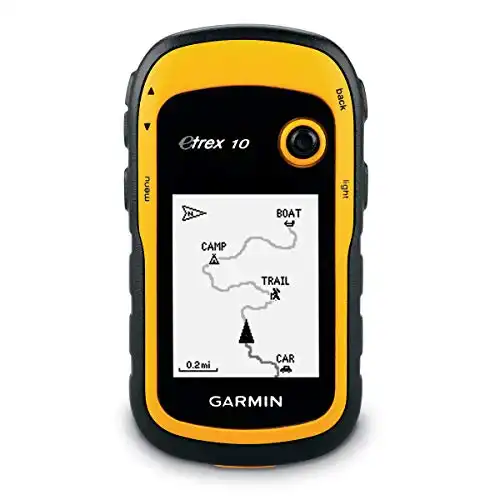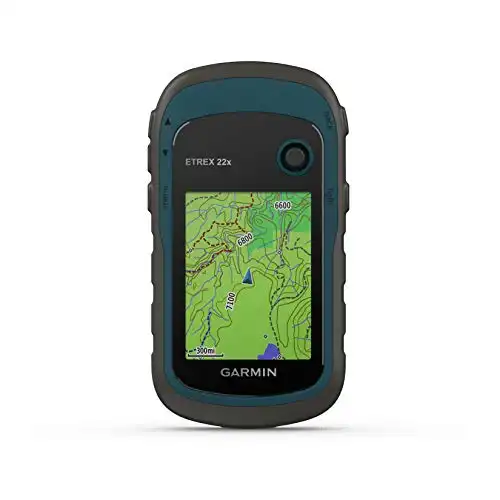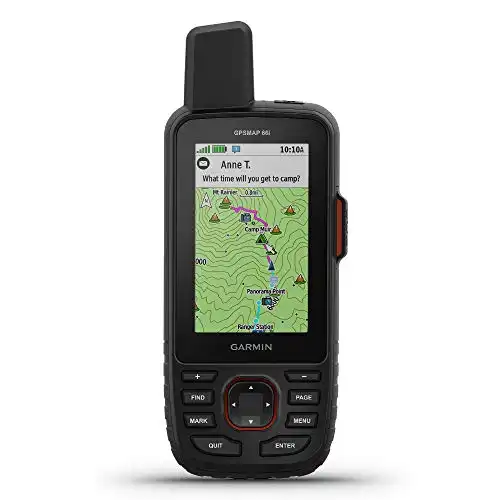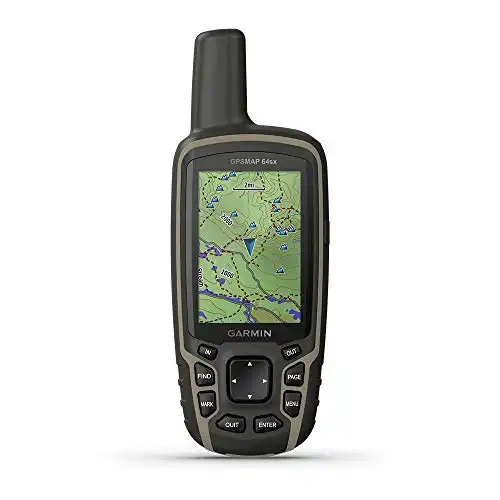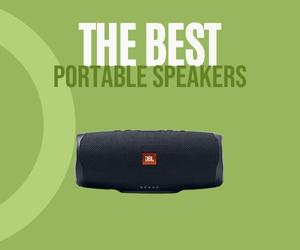Normally, when we are on a hiking trail, all those areas are not covered with network towers, so our phone signal is dead.
- And what do we use for finding our way in the mountains if there is no signal?
- What if we get lost, and no one is around to help us?
- How do we get back to our car or campsite?
- In case of an emergency, how do we call for help?
The best way to be safe while hiking is to carry a GPS device.
A hiking GPS can help you find your way back to the trail, even if you have veered off course. It can pinpoint your location so you can be found in an emergency.
There are a lot of different GPS devices on the market, and it can be hard to decide which one is the best for you. This article will help you choose the best hiking GPS based on your needs.
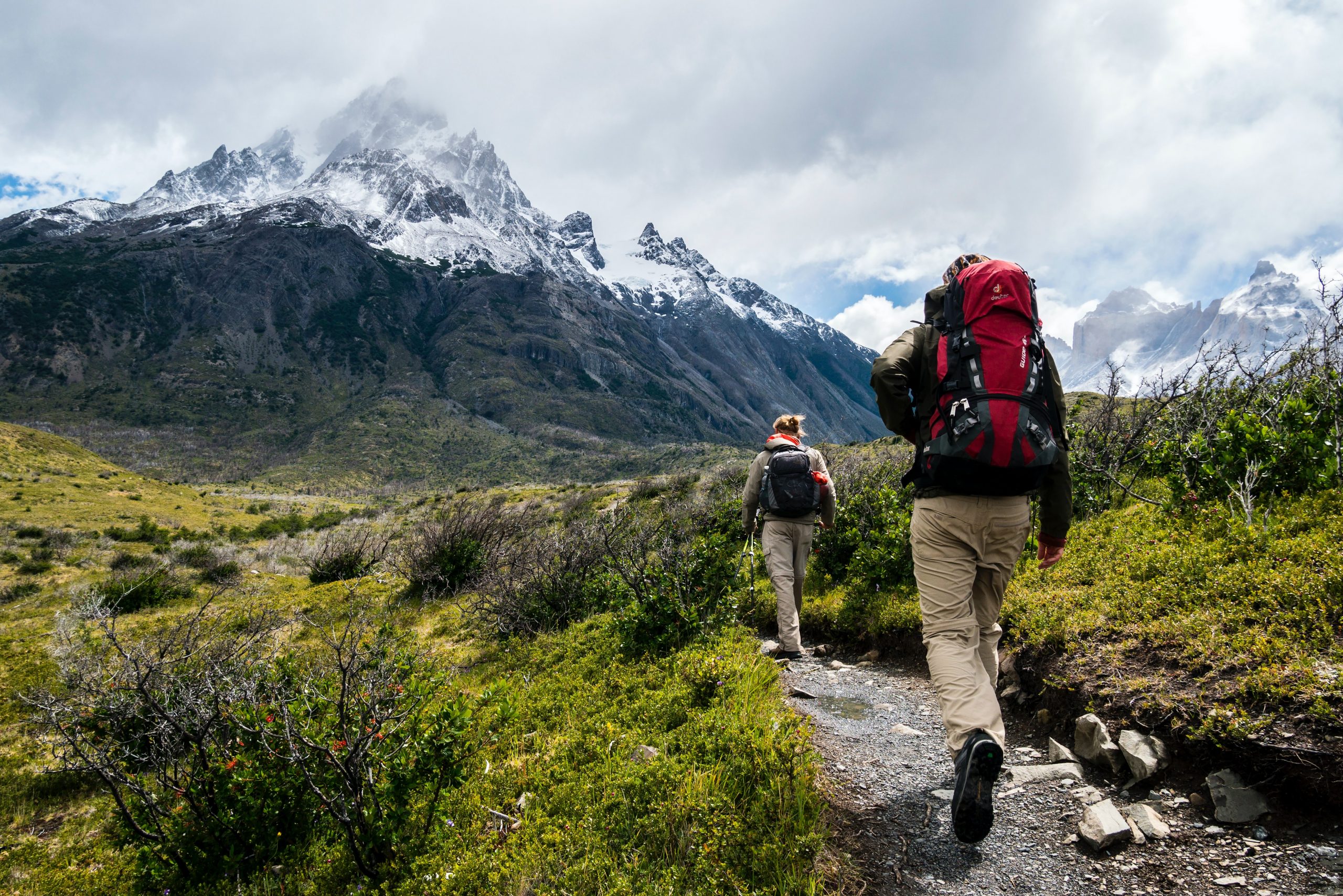 Also Read: Best Stanley Cup Tumbler and Bottles
Also Read: Best Stanley Cup Tumbler and Bottles
4 Best Hiking GPS
On to the list of the best hiking GPS devices!
We’ve tried to include a variety of GPS devices so that you can find the perfect one for you.
1. Garmin eTrex 10
The eTrex 10 is an excellent choice for handheld navigation for budget-conscious outdoor enthusiasts. This eTrex model has a high-sensitivity GPS receiver, a 2.2-inch monochrome display, and a worldwide base map that makes seeing where you are and where you’ve been easier.
The eTrex 10 retains much of the same functionality as its more expensive counterparts. It supports geocaching GPX files for downloading paperless geocaches and has a built-in electronic compass and barometric altimeter.
Even in heavy cover or deep canyons, the high-sensitivity, WAAS-enabled GPS receiver and HotFix satellite prediction of a new TREX watch locate your position quickly and precisely and maintain it even in heavy cover and deep canyons.
Pros
- WAAS enabled GPS receiver
- x2 AA batteries with 20 hours of backup
- Waterproof to IPX7 standards
Cons
- The display could be bigger
2. Garmin eTrex 22x
Another product from Garmin, the eTrex 22x, is an excellent choice for those who need a reliable handheld GPS unit that won’t break the bank. Like the Garmin eTrex 10, the eTrex 22x has a high-sensitivity GPS receiver and a worldwide base map.
With the Terex 22x, you’ll be able to explore any terrain with ease. This GPS handheld is designed for tough conditions, featuring a 2.2” sunlight-readable color display. Additionally, it comes preloaded with Topo Active maps, including routable roads and trails specifically for cycling and hiking enthusiasts.
The MicroSD card slot and 8 GB of internal memory allow you to download additional maps on the go, such as BirdsEye Satellite Imagery (subscription required).
Pros
- 240 x 320 display pixels
- Waterproof and rugged design
- 2 AA batteries
- Support GLONASS satellite systems
- MicroSD card slot
Cons
- The battery life could be better
3. Garmin GPSMAP 66i
The Garmin GPSMAP 66i is equipped with the most up-to-date Garmin navigation technology available. Garmin TOPO mapping, preloaded on the device, offers high-resolution digital representations of topographic elevations, terrain contours, summits, coastlines, rivers, parks, lakes, and geographical locations.
This GPS handheld also comes with a worldwide basemap with shaded relief. It also can load additional maps so that you can explore any terrain with ease.
Birdseye Satellite Imagery is accessible for download straight to your device. With no subscription required, direct-to-device downloads of BirdsEye Satellite Imagery provide high-resolution photo-realistic views of your route, trailheads, clearings, and more. In complex terrains, support for multi-GNSS combined with altimeter, barometer, and compass sensors enables you to track and navigate.
Pros
- 200 hours of battery life
- 3-inch Sunlight-readable color display
- Cellular connectivity
Cons
- The device is a bit pricey
4. Garmin GPSMAP 64sx
The GPSMAP 64sx handheld navigator series can help you get around when you’re on the open road. Whether you’re hiking, cycling, geocaching, or climbing, your trusty Garmin pocket GPS in the palm of your hand lets you explore more. The series also offers multi-GNSS compatibility and Topo Active mapping improvements.
The GPSMAP 64sx is a highly sensitive GNSS device that supports multiple global navigation satellite systems, including GPS, GLONASS, and Galileo. With smart notifications, you may receive emails, texts, and alerts from your linked compatible device without digging into your bag. Stay in touch without ever taking out your phone.
Pros
- Paperless geocaching
- Battery life up to 16 hours
- Water-resistant design
- Topo Active maps
Cons
- Low battery life in certain modes
What to Consider When Choosing the Best Hiking GPS?
Getting lost is every hiker’s nightmare. A good hiking GPS can help you avoid getting lost and also help you find your way back if you get off-trail. Here are a few things to consider when choosing the best hiking GPS for your needs.
Touchscreen vs. Buttons
What do you prefer in this modern world? A lot of newer GPS devices have replaced buttons with a touchscreen interface. This can be more user-friendly, but it also means the device is more likely to break if it’s dropped. If you want a durable GPS device, look for one with buttons instead of a touchscreen.
If you go towards some of the more basic GPS devices, they may not have a color screen. This can make them harder to read in direct sunlight. If you want a device with a color screen, be prepared to pay a little more.
Satellite Messaging and SOS
If you’re planning on hiking in a remote area, getting a GPS device with satellite messaging and SOS capabilities is a good idea. More and more GPS devices can now send out messages or SOS alerts by satellite.
Usually, there is a subscription that you have to pay monthly( with a one-time setup fee) which allows you this tech in areas where there isn’t cell service.
With this technology, you can do things such as ascend and receive texts, post on social media, share your location and communicate between the different GPS devices.
Battery Type and Battery Life
GPS devices use a lot of power, so it’s important to consider the battery type and battery life when choosing a device. Many of the newer devices use lithium-ion batteries, which are rechargeable. These are great because you can always have a spare battery charged and ready to go.
However, lithium-ion batteries don’t do well in cold weather. If you’re planning on hiking in cold weather, you may want to choose a GPS device that uses AA batteries. These can be easily replaced if the battery dies.
Just like with your smartphone, it’s important to consider the battery life when choosing a GPS device. If you’re planning on hiking for more than a day, you’ll want a device with long battery life.
Ability to Add Maps
One of the great things about GPS devices is that you can add maps to them. This can be especially helpful if you’re hiking in an area that doesn’t have good cell service. By adding maps to your GPS device, you can be sure that you always have a map with you, even if you can’t get cell service.
Durability
A lot can happen when you’re out on the trail. Your GPS device can be dropped, stepped on, or even submerged in water. When you’re choosing a GPS device, make sure to choose one that is durable and can withstand a few bumps and bruises.
Reliability
When you’re out on the trail, the last thing you want is for your GPS device to stop working. Make sure to research and choose a reliable GPS device that won’t let you down when you need it the most.
Display Resolution & Quality
Like in bad weather or at night, a clear and bright display is very important to find your way. A backlit display is also very useful in low-light conditions. So we recommend you choose a display with high resolution and a backlit option.
Wireless Capability and Smart Notifications
GPS devices that perform well are able to share information wirelessly with other devices through Bluetooth technology. If you have a compatible receiver, you can easily send track and waypoint files to another device without any wires.
You can share your current route with others in only a few minutes by syncing your devices. We recommend this method if you want to communicate and share tracks with other Bluetooth users.
Speed
In general, the speed of a GPS device is how fast it can acquire satellite signals and calculate your position. If you want a GPS device that is quick and responsive, make sure to choose one that is fast.
Geocaching
Geocaching is a real-world, outdoor treasure hunting game using GPS-enabled devices. Participants navigate to a specific set of GPS coordinates and then attempt to find the geocache (container) hidden at that location.
Nowadays, most GPS devices have this option because it’s a very fun activity that can be done with family and friends. If you’re looking for a GPS device that has geocaching capabilities, make sure to choose one that has this feature.
Versatility
Some GPS devices are very versatile and can be used for a variety of activities, such as hiking, biking, sporting functions, flashlight, geocaching, and more. If you’re looking for a GPS device that you can use for multiple activities, make sure to choose one that is versatile.
Weight and Size
When you’re hiking, the thing you want is to be weighed down by a heavy and bulky GPS device. If you’re looking for a GPS device that is lightweight and easy to carry, make sure to choose one that fits these criteria.
FAQs
What is a hiking GPS?
A hiking GPS is a handheld device that uses satellite signals to determine your location. Hiking GPS devices usually have special features that are designed for use outdoors, such as topographic maps, altitude readings, and compass functions.
Is it worth getting a GPS for hiking?
Yes, a GPS can be beneficial when hiking, especially if you’re hiking in an unfamiliar area. A GPS can help you find your way back to the trail if you get lost, and it can also help you find nearby amenities, such as water sources and campsites.
Do all GPS devices come with maps?
No, not all GPS devices come with maps. However, most handheld GPS devices allow you to add maps, so you can be sure to have a map with you even if your device doesn’t come with one.
Can a GPS replace a map and compass?
No. When traveling in strange territory, we strongly advise you to bring a map and compass. Maps won’t run out of power or be damaged if they fall off a cliff. They provide an extra safeguard against technological failure.
What about the GPS on my smartphone?
Your smartphone’s reception might not be dependable in the backcountry. Smartphones require a low-cost GPS device and triangulation between cell towers (and even WiFi) to establish your position. However, many of the greatest hikes are in mountain ranges, deserts, or pristine backcountry regions with no reliable cellular coverage, leaving your smartphone’s GPS sensors ineffective.
Is there something more accurate than GPS?
Yes, there are more accurate ways to determine your location. The Visual Positioning System (VPS) is the most accurate system, which uses a camera to compare your current surroundings with a database of known landmarks. However, VPS is not yet available on handheld devices.
Conclusion
Get to know your options before buying a hiking GPS device for hiking. You want to make sure the device you choose is fast, versatile, and lightweight. Most importantly, you want a device that is reliable and accurate.
Check out our list of the best hiking GPS devices to help you choose the right one for your needs.
EDM Sauce is reader-supported. We may earn a commission through products purchased using links on this page. Learn more about our process here.
Recommended Reading:











